Recommended Posts
ParaHog 0
QuoteWould you please explain to the gallery how I "most benefit" from the imposition of a new bureaucracy?
Well, let's see.
1) You want USPA to require new wingsuit flyers to receive instruction from certified wingsuit instructors.
2) And you run a wingsuit school.
Sounds like a biased interest to me.
What am I missing?
normiss 801
Open to correction....and I'll dig for that info again if needed.
I know I found some of it listed on the FAI Instructor Requirements.
Sorry I missed that somewhere....busy lately!
billvon 2,991
>before the USPA. Some of us have made suggestions to USPA with that in mind.
Cool! And that's the right way to go about it; propose solutions and work out which one is best overall.
>And many still believe USPA needs to consider the broader question about
>implementing ratings for teaching advanced disciplines to experienced skydivers.
Also agreed.
DSE 5
QuoteQuoteWould you please explain to the gallery how I "most benefit" from the imposition of a new bureaucracy?
Well, let's see.
1) You want USPA to require new wingsuit flyers to receive instruction from certified wingsuit instructors.
2) And you run a wingsuit school.
Sounds like a biased interest to me.
What am I missing?
You're missing a great deal. Assumptions can be bad things. Do you see many wealthy AFFI's running around? Figure for every 50 AFF students, there is one wingsuit student. Oh BTW, I draw no financial benefit from teaching FFC's at Skydive Elsinore.
On the flip side, our school has put out a few dozen videos, several training articles, pincheck guide, guide for DZO's, and developed a program much like AFF for those that want to continue wingsuit training beyond the FFC (and no, the multi-jump program is not part of anything USPA has seen, and is not/will not be part of any proposal). We also developed Wingsuit Water Training after 50 entries into various kinds of water situations both real and contrived.
Who paid for all that?
No one other than Fly Like Brick has stepped up with training materials.
It takes a great deal of time to plan, shoot, edit, and deliver this stuff. For no benefit otehr than appreciation from our fellow skydivers.
You're welcome (It would actually be nice for my staff and I to hear even one "thank you" for the work we've shared, vs all the "fuck you's" from haters like Vectorboy.)
My guys and I produce solid content. For free. Using very modern methods of training. I'm proud of them not for only their talent, but their spirit.
We share what we have, freely. The goal is to create safer, better-skilled wingsuit pilots so that we can grow the discipline and do great things. Part of that goal is to challenge instructors to meet an industry standard so that the wingsuiters they create, are cultured from the same standard.
normiss 801
Thank you.
you fuck.....![]()
Just kidding Spot, you know I respect what you've done for dress jumpers.
![]()
Seriously, thank you.
I really appreciated the water entry experiments you guys did. We ALL learned a lot about what to expect with an actual rig on on a water landing vs. what the USPA water training with an old worn-out canopy thrown over your head in a pool taught us.
Nobody, nobody will get a thank you from me for going before my governing body with concerns about our sports safety issues real or imagined without being willing to present the same information to other "regular" members of the governing body equally, catch that last part equally? I don't care if it is you or ms Taya or anybody. We are all the USPA, some bright minds within our group might have a better,easier,less intrusive solution.
The problem is that you don't view the rest of us as equals being able to take part in our solution, you just think of you as better.
BTW don't specifically draw me into a debate if you don't want to hear what I will say and then complain!
normiss 801
Your description was not the way I saw things happen.
QuoteAustralia, UK, Saudi Arabia, Netherlands, Turkey, and South Africa all had wingsuit instructor ratings as of 2010 I believe - the UK I think simply required a coach rating.
Open to correction....and I'll dig for that info again if needed.
I know I found some of it listed on the FAI Instructor Requirements.
Sorry I missed that somewhere....busy lately!
I didn't go far, but I checked Australia - it says 3 jumps are required with Wingsuit Tutor (tutor does not seem to be the equivalent to instructor here) Also jump 2 is optional with Tutor, but jump 3 is a mandatory 2-3 way.
This could be a part of our SIM as required training too, not as a recommendation.
Source: APF Training Operations Manual p.56
http://www.apf.asn.au/ArticleDocuments/165/TOM_201207_V2.pdf.aspx
And from their Parachute Instructors Manual bottom of p.13
http://www.apf.asn.au/ArticleDocuments/157/PIM_V3-201105.pdf.aspx
"The Instructor ‘D’ and Tutor must be under the direct supervision of a DZSO and is responsible to the Chief Instructor who has agreed to supervise their activities.
The duties of an Instructor ‘D’ and a Tutor are to:
• Brief and debrief student or novice parachutists on the practical aspects of their training descents;
• Check the student or novice in their performance of emergency procedures and assess their competence;
• Directly supervise student or novice training descents, including the fitting of equipment, pre-jump equipment check, briefing of pilot, GCO and TA, loading the aircraft and despatching or accompanying the student or novice in freefall, act as TA if necessary or required.
Some tasks which a Instructor ‘D’ or Tutor MUST NOT perform are to:
• Act as DZSO;
• Act as an Instructor or Tutor if there is no DZSO;
• Teach the first jump course, nor teach emergency procedures to students or novices (except that an Instructor ‘D’ may assist an Instructor ‘B’ or ‘A’).
This sounds like a equivalent of a USPA coach rating.
So I would think a wingsuit tutor is an experienced wingsuit coach who has a coach rating.
Then on page 31: THE AFF, TANDEM, RW, S/L AND FREEFLY ENDORSEMENT EXAMINATIONS"
There is no mention of an official wingsuit endorsement.
Any Aussies to correct me?
South Africa seems similar, I looked through their forms and do not see a reference to a wingsuit instructor/coach.
They have a coach rating that has sub-disciplines but wingsuiting in not one of them
http://www.para.co.za/Files/Form%2019%20Coach%20Rating%20Requirements.doc
I see BPA has something called a wingsuit coach (note - not an instructor wording like in their AFF/Tandem section).
From their section 4 - Instruction
http://www.bpa.org.uk/assets/Operations-Manual.doc/sec-4.doc there are a few types of instructors but wingsuit is not of them.
Now, I'm not surprised with wingsuit coach, they have BPA canopy coaches, BPA freefly coaches, BPA RW coaches, of level 1 and 2 and camera certifications and some really convoluted bureaucracy (see Radio License!
I don't know many british jumper who thinks this is great. Many I know travel to Spain to train under USPA and avoid those rules as they have problems finding time/people to complete requirements and costs are very high.
[edit] It also mentioned that a person can be trained by a non BPA wingsuit coach, so a PF coach is okay as long as the DZO and chief instructor (or however you call it) approves it. bottom of page 2
http://www.bpa.org.uk/assets/Forms/BPA-Wing-Suit-Training-Manual.doc
I will have to look into the Dutch, they do have mandatory canopy progression so I may find something there but I already spent 1hr at work browsing through documents. If I find something, I will update this thread.
And not to be a dick but I will call bullshit on Turkey and Saudis (and since you brought it up, the burden of proof should be on you
Second, I'm afraid none of that would be english.
Third, I would try not be model myself on Saudis.
Quote~Standardization in training...
~Getting ahead of the curve...Quote
I seriously don't see any logic in an argument against that.
The proposal seems to me to be a way of achieving those goals in both a time and cost effective way.
The 'arguments against' thus far seem to center around a combination of misinformation and resistance to change.
I can't speak to any others in the "against" camp, but my argument against this ridiculous proposal is based on historical fact: Establishing the crony-driven bureacracy known as AFF has led us directly to the state of affairs today, where we have too many people flying parachutes they don't understand or know how to fly -- with all of its attendant carnage.
Don Yahrling, whom I knew, jumped with and liked since our mid-1970s days at Fort Bragg and Raeford, became the lord of AFF, and whether you became an AFF instructor or not depended entirely on whether you kissed Don's ass satisfactorily or not. It took YEARS to solve this -- and then it basically just metasticized when Rick Horn and a couple of other guys got the plum assignment of AFF Course Director.
It took years after that before the system finally settled down to become more meritocracy than kiss-ass-istocracy.
This history is already repeating itself at Skydive Elsinore, where people are kicked off the DZ for criticizing DWE or his "SEWS" program, either in person or online -- and even a cursory look at DWE's entire skydiving "career" shows that the probability is high that the Yahrling Effect will rear its ugly ass again if DWE's program is established systemwide.
More importantly, however, by freezing "AFF" course design at its initial level -- when even the skygods jumped 200+ sf canopies, basic parachutist training was not allowed to evolve for decades because to change the system to reflect reality would have negatively impacted the crony perks of its gatekeepers and power brokers.
The most glaring result of that is our current problems with poor parachute piloting as a consequence of the freefall FUN skills focus of "AFF" instead of the parachutist SURVIVAL skills focus that we should have.
But how did we seek to "fix" this problem? Not by discarding the freefall FUN-focused AFF system and replacing it with one focused on teaching people to understand and properly operate their parachuting equipment -- but to a massively complex system that creates the illusion of change when all it really did is expose DZOs to greater liability if they do not follow every labyrinthine element of the new training system.
Bottom line: The only critical issue about wingsuiting is tail strikes from fools spreading their wings out the door instead of falling clear of the plane first.
It seems to me that instead of erecting another unnecessary crony-driven bureaucracy, all we really need to do is have a one-quarter-page "wingsuit waiver" that says something to the effect that: "I acknowlege and understand that I put the jump aircraft and everyone aboard it at risk if I open my wings at exit and hit the tail. I therefore promise to spread my wings no sooner than one second after exit -- and that I or my estate will pay for all damages to the aircraft if I violate this promise."
The point of such a waiver is not to exert legal force but to do exactly what Yosemite does by requiring everyone to get a backcountry permit before going off the pavement: education. By requiring the permit, offered without condition, cost, or qualifications, it guarantees that people will at least have the information they need to know in their hands, and this does in fact go a long way toward steering people into the right conduct (such as not pooping or peeing in the creeks, hanging their food in trees instead of in their tents, et al).
Beyond that, DZOs should be able to limit or ban wingsuit jumping if they don't want it at their DZs, just as they do with swooping -- and did in the past with CRW. They built those businesses with their sweat and $$$ and are entitled to run those businesses exactly the way they want to.
44
P.S. For those who don't know me, I started wingsuiting in 1998. In 1999, Jeb Corliss and I made the first wingsuit jumps from the Petronas Towers and a few years later, I jumped with Jeb and Luigi Cani on the first canopy-wingsuit RW dives. I've never been into big flocking dives, but I appreciate all of it and also think that learning to fly a wingsuit is not that big a deal, and for the most part can be boiled down to three primary elements:
1. Don't spread your wings until you're clear of the plane.
2. Do practice touches way high until you're confident that the wing won't bother your pull.
3. Pull way high the first few times just in case you were wrong about #2.
There are of course multiple other sub-elements to learning how to fly a wingsuit on airplane jumps, but if you follow these three, you'll be able to save yourself and not hurt anybody else (or anybody else's airplanes). And you don't need a new bureaucracy to do that.SCR-6933 / SCS-3463 / D-5533 / BASE 44 / CCS-37 / 82d Airborne (Ret.)
"The beginning of wisdom is to first call things by their right names."
ufk22 33
How about ...Quote>Rather, there are other ways to appoach the issue besides the proposal that is/was
>before the USPA. Some of us have made suggestions to USPA with that in mind.
Cool! And that's the right way to go about it; propose solutions and work out which one is best overall.
>And many still believe USPA needs to consider the broader question about
>implementing ratings for teaching advanced disciplines to experienced skydivers.
Also agreed.
Let the manufacturers approve a course syllibus, require a USPA instructional rating with a manufacturer's endorsement to teach it, make it a recommendation rather than a requirement.
USPA instructiontal ratings system is designed around teaching the basics of skydiving, nothing more. The ISP includes the basics of canopy flight (if the instrutor takes the time to teach this) needed for survival. Same thing with freefall, just the basics. While I certainly see the value in good training for wingsuiting, I can also see the value in the same type of training for CRW, swooping, big-way, etc. I cannot see a REQUIREMENT for that type of training.
strife 0
Division 4 – Wingsuit Descents
11.4.1 Wingsuit Training Prerequisites
Before commencing wingsuit training a parachutist must:
(a) Hold, or be eligible to hold, at least a Certificate ‘D’
(b) Have completed a course of instruction in accordance with the Training Operations Manual
11.4.2 Training Progression
(a) Subject to regulation 13.1.5, each stage of the Wingsuit Training Descent Table must be performed to the satisfaction of the DZSO before the parachutist is permitted to advance to the next stage
(b) After completing the progression requirements of the Wingsuit Training Descent Table a parachutist must obtain the written approval of a Chief Instructor in order to participate in relative work during a wingsuit descent
11.4.3 Audible Altimeter
(a) A parachutist on any type of wingsuit descent must wear a functioning audible altimeter
(b) The altimeter must be:
(i) Approved by the Manufacturer for the purpose of
Skydiving,
(ii) Mounted so that it is clearly audible throughout the descent; and,
(iii) Set to indicate the height above the DZ.
11.4.4 Wingsuit Descents Conditions
(a) For all wingsuit descents, the parachutist must not enter cloud, regardless of whether the operation has the written specification referred to in 9.1
(b) For wingsuit training progression descents, defined under 11.4.4(a), the minimum exit height must be 10,000 feet AGL
16.3.3 Wingsuit Tutor Rating
An applicant for a wingsuit tutor rating must have documented evidence of at least five hundred (500) descents, including at least one hundred (100) wingsuit descent
4.4.6 Wingsuit Crest (WSC)
Applications for a WSC must:
(a) Hold an APF Certificate ‘D’; and
(b) Have completed the Wingsuit Training Table to the satisfaction of a wingsuit tutor; and
(c) Have the tutor witness and verify the 3 training descents; and
(d) Have the written approval of the Chief Instructor in order to participate in relative work during a wingsuit descent
Note: see Part 11 Division 4 regarding wingsuit descents
From the Training Operations Manual
http://www.apf.asn.au/ArticleDocuments/165/TOM_201207_V2.pdf.aspx
6.7 Wingsuit Training
6.7.1 Before being permitted to make a wingsuit training descent, the trainee will be thoroughly briefed on that descent by a Tutor who holds an endorsement for wingsuit training,
6.7.2 The training descents will be those defined in the APF Operational Regulations PART 11 Division 4..
6.7.3 The training descents will be those defined in the APF Wingsuit Training Table. in Appendix 10 of this manual
billvon 2,991
Already done. But each one is different.
>require a USPA instructional rating with a manufacturer's endorsement to teach it
So each one teaches that manufacturer's standards? I would think a common standard - with details added for the peculiarities of each suit - would be a better overall approach. Sort of like AFF - one syllabus, each DZ adds adaptations for their location/gear.
>While I certainly see the value in good training for wingsuiting, I can also see the value
>in the same type of training for CRW, swooping, big-way, etc. I cannot see a
>REQUIREMENT for that type of training.
CRW and big-way - agreed. The people actually organizing those dives are better ones to be the gatekeepers of training, since you can't do them on your own.
Wingsuit and canopy flight - more of a problem. Anyone can buy a Velo 79 at 10 jumps and kill themselves, at which point they do not benefit much from additional instruction. (And may not even know it is needed or available until after it will no longer be any good to them.)
ufk22 33
Quote>Let the manufacturers approve a course syllibus
Already done. But each one is different.Why does USPA need to be involved?Quote
Then let the manufacturers either get together or not
>require a USPA instructional rating with a manufacturer's endorsement to teach it
So each one teaches that manufacturer's standards? I would think a common standard - with details added for the peculiarities of each suit - would be a better overall approach. Sort of like AFF - one syllabus, each DZ adds adaptations for their location/gear.
>While I certainly see the value in good training for wingsuiting, I can also see the value
>in the same type of training for CRW, swooping, big-way, etc. I cannot see a
>REQUIREMENT for that type of training.
CRW and big-way - agreed. The people actually organizing those dives are better ones to be the gatekeepers of training, since you can't do them on your own.
Wingsuit and canopy flight - more of a problem. Anyone can buy a Velo 79 at 10 jumps and kill themselves, at which point they do not benefit much from additional instruction. (And may not even know it is needed or available until after it will no longer be any good to them.)
And anyone can buy a CRW rig and start jumping it. And a lot of big-way organizers don't train. And a high percentage of swoop deaths are people who have tons of jumps and have been swooping for a long time.
The idea that USPA needs to mandate advanced training of any kind goes against the nature of our organization, and if some people want to turn it into more of an FAA regulatory body I'll opt out.
kallend 2,027
QuoteIt was my experience that Douglass did indeed share a TON of information with many people.
Your description was not the way I saw things happen.
DSE has put out very informative, good stuff. Kudos to him for making it available.
That, however, does not mean that a USPA rating is needed to teach a licensed skydiver with >200 jumps how to put on leg straps, exit the plane with wings closed, and find the hackey while wearing wings.
The only sure way to survive a canopy collision is not to have one.
pirana 0
Quotehttp://www.uspa.org/NewsEvents/News/tabid/59/Default.aspx#29084
QuoteBeginning January 1, 2013, the stamped A-license proficiency and progression cards will no longer be considered valid licenses beyond 60 days. They can still be used to apply for an A-license beyond this time frame.
Also beginning January 1, 2013, all USPA instructional rating applications require a valid USPA license, in lieu of the FAI equivalent.
Those both sound like ways to get more money. There was already a point brought up somewhere on here (can't find the post off hand) that if they want to verify license applications are filled out correctly, they could do a courtesy check on it without issuing a license number.
Why not allow FAI licenses for USPA ratings?
Call me lazy for not looking up the stats, but it seems there are more experts than newbies augering themselves in under a good canopy.
Small data set, but of the 2 deaths and half-dozen femurs I've had the unfortunate experience to know, only one was a newbie.
pirana 0
QuoteA tough day, or just born mean?
LOL... no, I was born free -- but sorry the post was so long; I didn't have time to write a short one.
Funny thing is, DWE's entire gambit, my post, and this entire thread can be summed up by the 26 words in your tag line:
" . . . the lust for power can be just as completely satisfied by suggesting people into loving their servitude as by flogging them and kicking them into obedience." -- Aldous Huxley
So, thanks for contributing!
Oh wait... is that mean, too?
44
"The beginning of wisdom is to first call things by their right names."
Quote
From our Op Regs
Division 4 – Wingsuit Descents
11.4.1 Wingsuit Training Prerequisites
Before commencing wingsuit training a parachutist must:
(a) Hold, or be eligible to hold, at least a Certificate ‘D’
(b) Have completed a course of instruction in accordance with the Training Operations Manual
11.4.2 Training Progression
(a) Subject to regulation 13.1.5, each stage of the Wingsuit Training Descent Table must be performed to the satisfaction of the DZSO before the parachutist is permitted to advance to the next stage
(b) After completing the progression requirements of the Wingsuit Training Descent Table a parachutist must obtain the written approval of a Chief Instructor in order to participate in relative work during a wingsuit descent
11.4.3 Audible Altimeter
(a) A parachutist on any type of wingsuit descent must wear a functioning audible altimeter
(b) The altimeter must be:
(i) Approved by the Manufacturer for the purpose of
Skydiving,
(ii) Mounted so that it is clearly audible throughout the descent; and,
(iii) Set to indicate the height above the DZ.
11.4.4 Wingsuit Descents Conditions
(a) For all wingsuit descents, the parachutist must not enter cloud, regardless of whether the operation has the written specification referred to in 9.1
(b) For wingsuit training progression descents, defined under 11.4.4(a), the minimum exit height must be 10,000 feet AGL
16.3.3 Wingsuit Tutor Rating
An applicant for a wingsuit tutor rating must have documented evidence of at least five hundred (500) descents, including at least one hundred (100) wingsuit descent
4.4.6 Wingsuit Crest (WSC)
Applications for a WSC must:
(a) Hold an APF Certificate ‘D’; and
(b) Have completed the Wingsuit Training Table to the satisfaction of a wingsuit tutor; and
(c) Have the tutor witness and verify the 3 training descents; and
(d) Have the written approval of the Chief Instructor in order to participate in relative work during a wingsuit descent
Note: see Part 11 Division 4 regarding wingsuit descents
From the Training Operations Manual
http://www.apf.asn.au/ArticleDocuments/165/TOM_201207_V2.pdf.aspx
6.7 Wingsuit Training
6.7.1 Before being permitted to make a wingsuit training descent, the trainee will be thoroughly briefed on that descent by a Tutor who holds an endorsement for wingsuit training,
6.7.2 The training descents will be those defined in the APF Operational Regulations PART 11 Division 4..
6.7.3 The training descents will be those defined in the APF Wingsuit Training Table. in Appendix 10 of this manual
I rest my case.
44
"The beginning of wisdom is to first call things by their right names."
ParaHog 0
QuoteQuoteQuoteWould you please explain to the gallery how I "most benefit" from the imposition of a new bureaucracy?
Well, let's see.
1) You want USPA to require new wingsuit flyers to receive instruction from certified wingsuit instructors.
2) And you run a wingsuit school.
Sounds like a biased interest to me.
What am I missing?
You're missing a great deal. Assumptions can be bad things. Do you see many wealthy AFFI's running around? Figure for every 50 AFF students, there is one wingsuit student. Oh BTW, I draw no financial benefit from teaching FFC's at Skydive Elsinore.
On the flip side, our school has put out a few dozen videos, several training articles, pincheck guide, guide for DZO's, and developed a program much like AFF for those that want to continue wingsuit training beyond the FFC (and no, the multi-jump program is not part of anything USPA has seen, and is not/will not be part of any proposal). We also developed Wingsuit Water Training after 50 entries into various kinds of water situations both real and contrived.
...
We share what we have, freely. The goal is to create safer, better-skilled wingsuit pilots so that we can grow the discipline and do great things. Part of that goal is to challenge instructors to meet an industry standard so that the wingsuiters they create, are cultured from the same standard.
Thank you for your work, and for the expanded explanation.
If the bureaucracy is created that requires every wing suit flyer at your DZ to come to you for training, for a fee, then perhaps you can make more money. It's not about how rich you get doing it, it's about forcing experienced jumpers to pay someone money before they're allowed to jump a wingsuit. I'm against that.
All your other work for wingsuit education and safety is admirable. That's the way we've always done it in skydiving, because we love the sport and care about other jumpers. We don't need no stinkin' regimented bureaucracy to do that. We've always had people like you willing to step forward and do what it takes to make it happen. Just like every drop zone has someone newbies go to to learn big-way RW, or CReW. New guys learn those disciplines by volunteer informal coaches, for free, just because they like to pay back to future generations of jumpers, for the sport which has given them so much pleasure. There's no bureaucracy for those disciplines, and people perform those kind of jumps every weekend, safely. I don't see why wingsuits should be any different.
DSE 5
Quote
Thank you for your work, and for the expanded explanation.
If the bureaucracy is created that requires every wing suit flyer at your DZ to come to you for training, for a fee, then perhaps you can make more money. It's not about how rich you get doing it, it's about forcing experienced jumpers to pay someone money before they're allowed to jump a wingsuit. I'm against that.
All your other work for wingsuit education and safety is admirable. That's the way we've always done it in skydiving, because we love the sport and care about other jumpers. We don't need no stinkin' regimented bureaucracy to do that. We've always had people like you willing to step forward and do what it takes to make it happen. Just like every drop zone has someone newbies go to to learn big-way RW, or CReW. New guys learn those disciplines by volunteer informal coaches, for free, just because they like to pay back to future generations of jumpers, for the sport which has given them so much pleasure. There's no bureaucracy for those disciplines, and people perform those kind of jumps every weekend, safely. I don't see why wingsuits should be any different.
You're welcome for the work, and there is more free material being formatted to go up in the next couple days on DZ.com (it's elsewhere already).
Nowhere, anywhere, does anything say "one has to pay to learn to wingsuit."
How many people achieve Coach ratings (lots of hands go up in the room)
How many people charge/are regularly paid for coached jumps? (not so many hands go up in the room).
But coaches are all taught to a standard, and must demonstrate their ability to meet a standard. Most of them pay pretty good money to become Coaches, too, and they then pay it forward.
Structure is needed if wingsuiting is going to be allowed to thrive/survive amongst DZO's and FAA.
Structure requires standards.
In USPA-land, standards=Rating Program.
A Rating program will not only standardize instruction, it also provides a fall-back and pedagogy when things go bad. It protects DZO's, S&TA's, and wingsuiters in general. If we can point to a USPA standard in an incident, we don't have the FAA saying "all wingsuiters are screwed up cowboys, this guy just didn't follow protocol" and it becomes a one-off where the wingsuit pilot messed up instead of affecting everyone else.
normiss 801
QuoteI didn't have time to write a short one.
Huh?
QuoteThe problem is that you don't view the rest of us as equals being able to take part in our solution, you just think of you as better.
Have you consider the idea that he might be right. Things sometimes work out that way in life. Not everyone should win a trophy.
Sparky
Quote
Structure is needed if wingsuiting is going to be allowed to thrive/survive amongst DZO's and FAA.
False premise; Ergo, all that follows is irrelevant.
44
"The beginning of wisdom is to first call things by their right names."



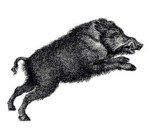
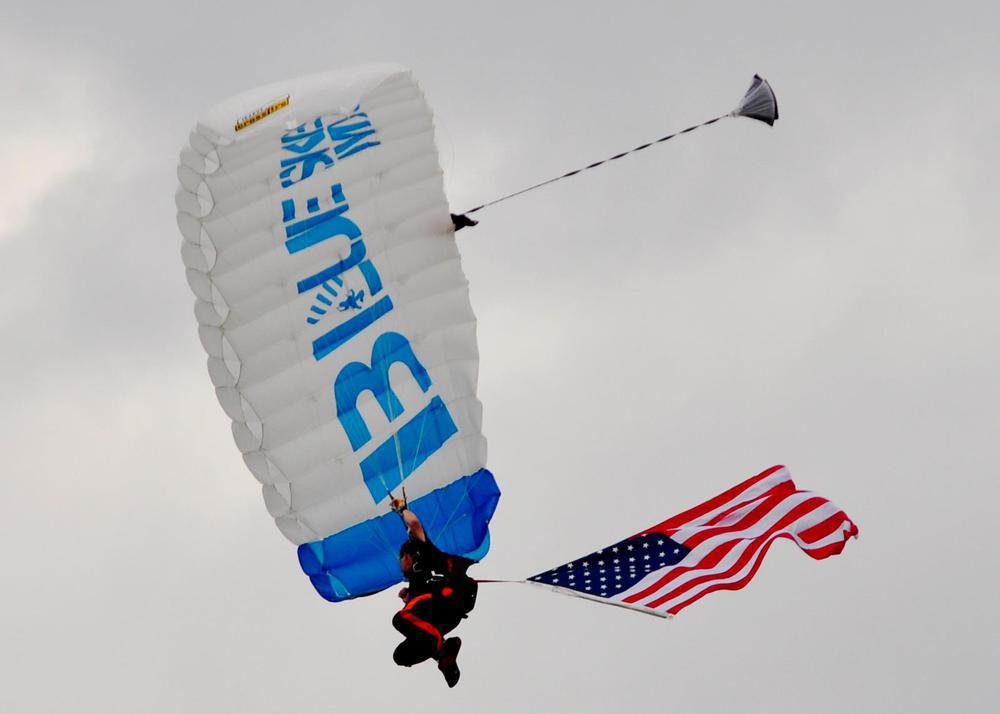
.thumb.jpg.4bb795e2eaf21b8b300039a5e1ec7f92.jpg)
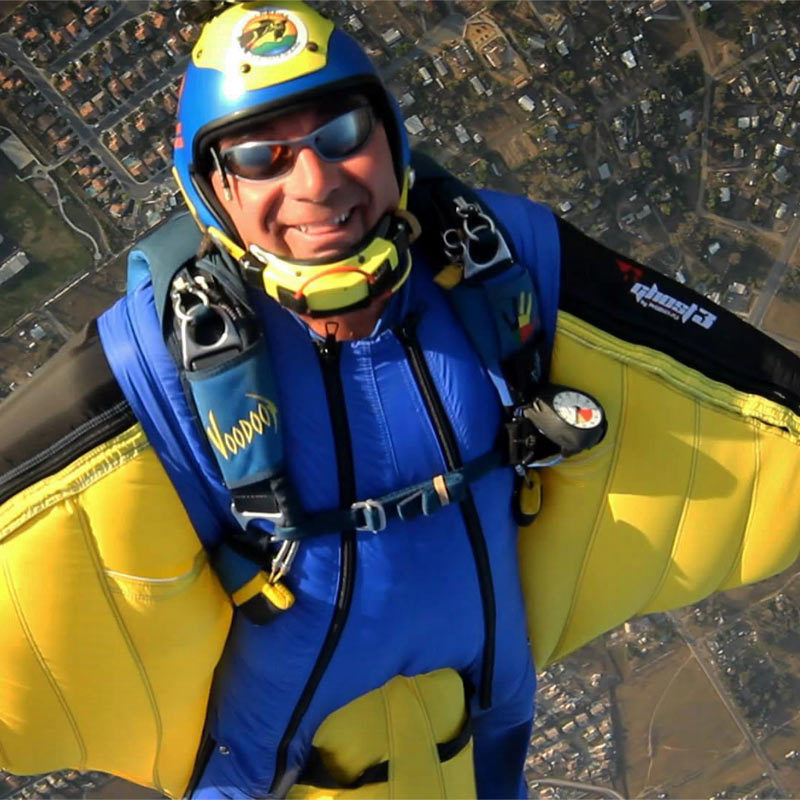
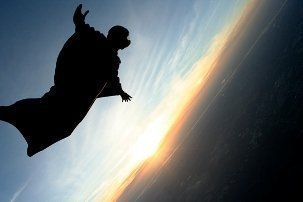
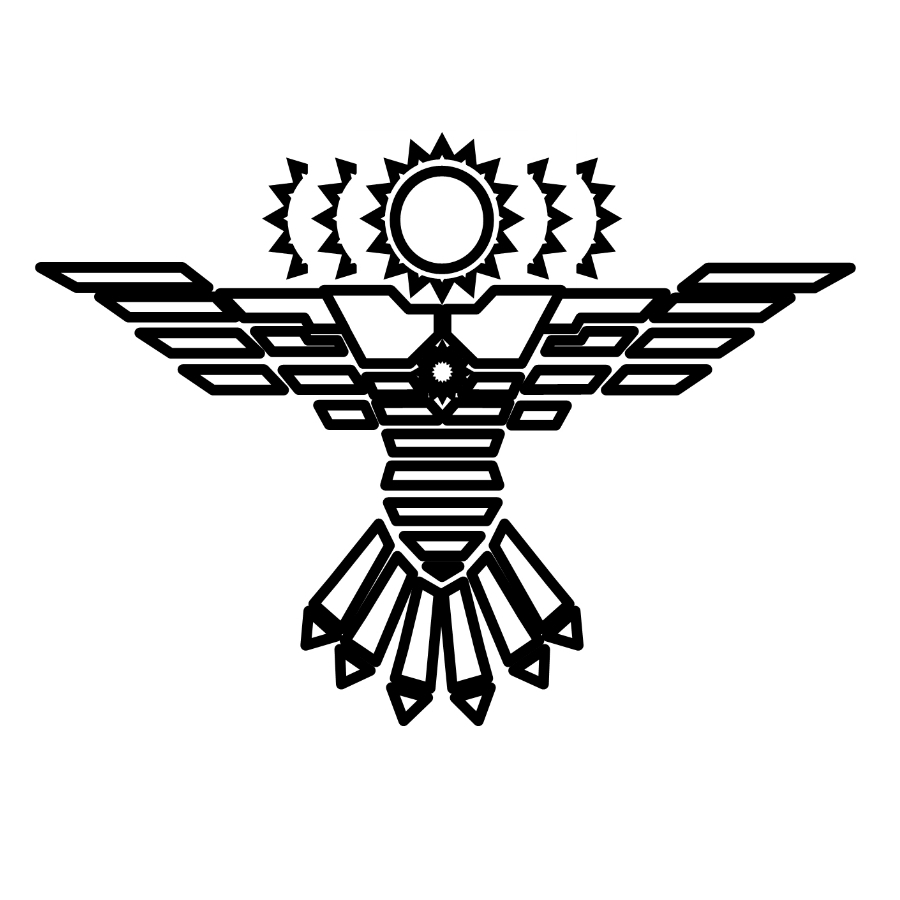


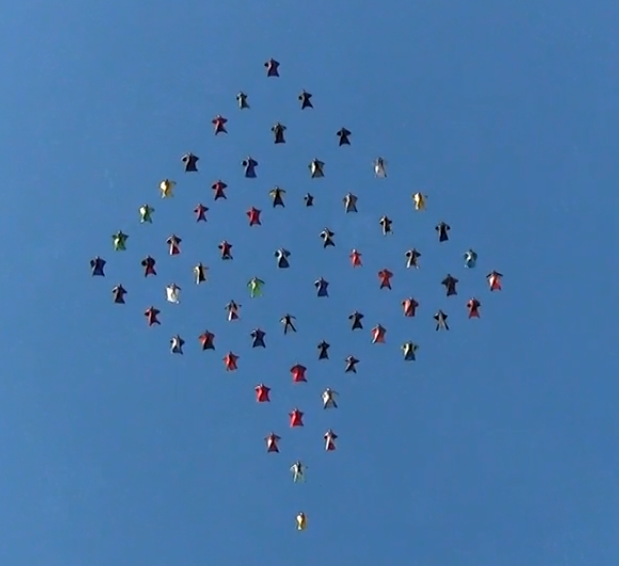
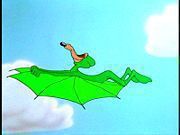
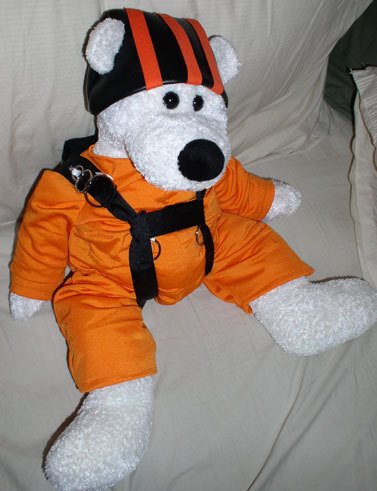
Apparently I may or may not have to vote on this in the near future given that a "poll of the membership" may be coming. Consider the following:
1) Can do an average skydive but cannot wing suit due to lack of jumps
2) Doesn't really know shit about WS outside of a) what i read on dizzy.com and 2) what i talk about in the loading area or at the bar
3) will probably give it a whirl given enough jumps
4) generally opposed to regulation absent a need
For those that get a ballot but don't know shit from shit...are there links which can be read so that one can draw an independent conclusion and vote appropriately?
thx
Share this post
Link to post
Share on other sites